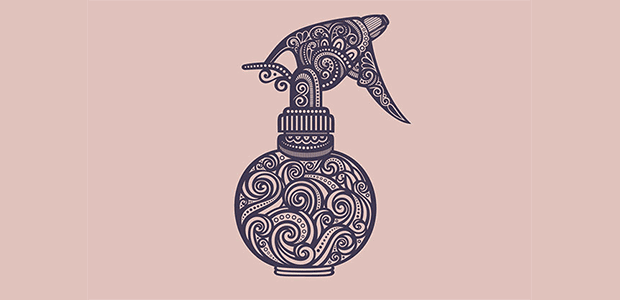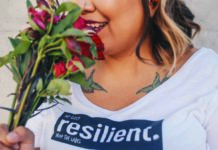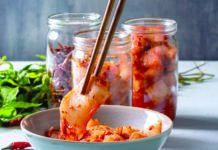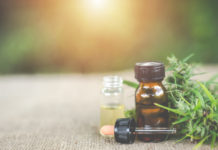
Whens the last time you brushed up on chemicals in cosmetics? Perhaps its time for a refresher on what to look for, and avoid, in your everyday products.
The ugly truth
Unfortunately, conventional beauty products can be loaded with ugly ingredients—including cancer-causing chemicals—and they’re very likely lurking in your bathroom cabinet or cosmetics pouch right now. Examples of questionable chemicals in cosmetics are endocrine disruptors, carcinogens, allergens/irritants, and environmental pollutants. Many chemicals fall into several of these categories.
Endocrine disruptors
Endocrine disruptors (EDs) are chemicals that interfere with hormone functioning. Examples include parabens and phthalates.
Parabens are widely used as preservatives in skin care products and can be absorbed through the skin. Phthalates are used in products such as perfumes and nail polishes, as well as soft plastics.
A new report by the Nordic Council (involving the governments of Denmark, Finland, Iceland, Norway, and Sweden) examined how much ED exposure costs society due to the damage to the male reproductive system EDs cause—from testicular cancer to infertility. The report concluded that the cost to the European Union is up to €1.2 billion (C$1.7 billion) each year. This figure doesn’t include all of the other people, wildlife, and body systems that can be affected by EDs, nor does it include the “intangible costs of infertility.”
New research also suggests ED exposure may play a part in the development of type 2 diabetes.
Carcinogens
Carcinogens are cancer-causing substances or exposures. Nail polish is notorious for containing formaldehyde, a known carcinogen, under a slew of different names. Some carcinogens can be “hidden” ingredients, meaning that they are contaminants in other ingredients. For example, lathering products such as shampoos and bubble baths often contain sodium laureth sulphate, or SLES, which can be contaminated with a probable carcinogen called 1,4-dioxane.
Allergens/irritants
Many ingredients, both listed and unlisted, can trigger allergic reactions such as respiratory distress, as well as headaches and asthma. Since many fragrance ingredients are unlisted, individuals often don’t know what exactly is causing their symptoms.
Environmental pollutants
We’re not the only ones affected by chemicals in our cosmetics: some chemicals added to cosmetics and personal care products have been detected in drinking water and are thought to have adverse effects on fish.
Maggie MacDonald, toxic program manager at the Canadian environmental and health group Environmental Defence, reminds us that the products we use don’t magically disappear. Chemicals in shampoo, for instance, travel down the drain and can end up in waterways, where they may act as pollutants.
So what’s the big deal?
Sure, putting a small amount of product on our skin doesn’t seem like a big deal, but it really adds up—especially if we use multiple products each day, explains MacDonald.
Sometimes, restricted ingredients are allowed in consumer products at low concentrations because of the long-held notion that “the dose makes the poison.” However, new research is refuting this belief, as some chemicals are shown to have different effects at different concentrations—even very low concentrations.
In addition, while an individual chemical may be thought to be safe on its own, we often don’t know how it interacts with other chemicals in the same product, or in other products that we use at the same time. Experts call this “the cocktail effect.”
Choose smarter
According to Adria Vasil, environmental journalist and author of the bestselling Ecoholic book series and Ecoholic column with Toronto’s NOW Magazine, “It’s impossible to control for all the chemicals in our environment, but we do have control over the products we bring into our households and slather on our bodies every day. By switching to safer cosmetics, we’re reducing our total body burden, which is so crucial.”
Once you know what you’re looking for, choosing nontoxic options is easy. First off, avoid ingredients from Environmental Defence’s “toxic ten” list:
- 1,4-dioxane
- artificial musks
- coal tar derived colours
- BHA and BHT
- formaldehyde-releasing agents
- petrolatum
- parabens
- phthalates
- silicone chemicals
- triclosan
Consider shopping at your local health food store for organic and/or natural options. Ask the knowledgeable staff about what products would be best for your skin type and specific concerns, ask for customer feedback, and try out samples or trial sizes.
Cosmetic chemical cheat-sheet
Here are expert tips for detoxifying cosmetic bags and bathroom cupboards.
- “Read labels and get to know the names of chemicals to avoid,” says MacDonald. “Being label savvy will help you discern the greenwashers from the truly eco-friendly businesses.”
- Check out Environmental Defence’s pocket shopping guide at justbeautiful.ca.
- “Look for nail polish that is ‘3 free’ (doesn’t contain three of the more harmful common ingredients) or better,” advises MacDonald.
- “Never judge a book by its cover!” warns Vasil. “A lot of products now advertise they’re free of, say, parabens, but are full of other dodgy ingredients. And way too many brands out there really try to market themselves as more natural or nontoxic than they really are.” Instead, Vasil recommends double-checking ingredients.
Vasil also suggests choosing products with “a third-party seal that tells you someone else was making sure that product is free of big baddies.” Common seals on cosmetic products include Ecocert, USDA Organic, Natrue, and BDIH. “They’re not perfect,” says Vasil, “but they all have long lists of ingredients forbidden from certified products, giving you more peace of mind.”





